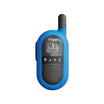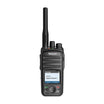Frequency Deviation is a pivotal concept in the realm of Frequency Modulation (FM), defining the extent to which the frequency of an FM signal can vary from its nominal carrier frequency. It's the backbone of how FM broadcasting operates, ensuring that audio signals are transmitted accurately and efficiently.
In FM communication, the audio signal's amplitude is used to vary the carrier frequency within a designated range. Frequency deviation quantifies this variation, indicating the maximum distance the signal's frequency strays from the central carrier frequency. Essentially, it's the range within which the frequency of the modulated signal oscillates in response to the modulating signal.
The significance of frequency deviation lies in its direct impact on the bandwidth of the FM signal and, consequently, the quality and clarity of the received signal. A larger deviation usually means a broader signal bandwidth, which can enhance the fidelity of the transmitted audio but may require more spectrum space. Conversely, a smaller deviation limits bandwidth usage but might reduce signal quality.
Understanding frequency deviation is crucial for engineers and technicians to optimize FM systems for various applications, from radio broadcasting to data transmission. It helps balance between efficient spectrum usage and maintaining high-quality signal transmission, ensuring that FM remains a robust and versatile communication method.
In summary, frequency deviation is not just a technical specification; it's a fundamental parameter that shapes the performance and reliability of FM broadcasting and communication systems, affecting everything from audio clarity to bandwidth efficiency.











































